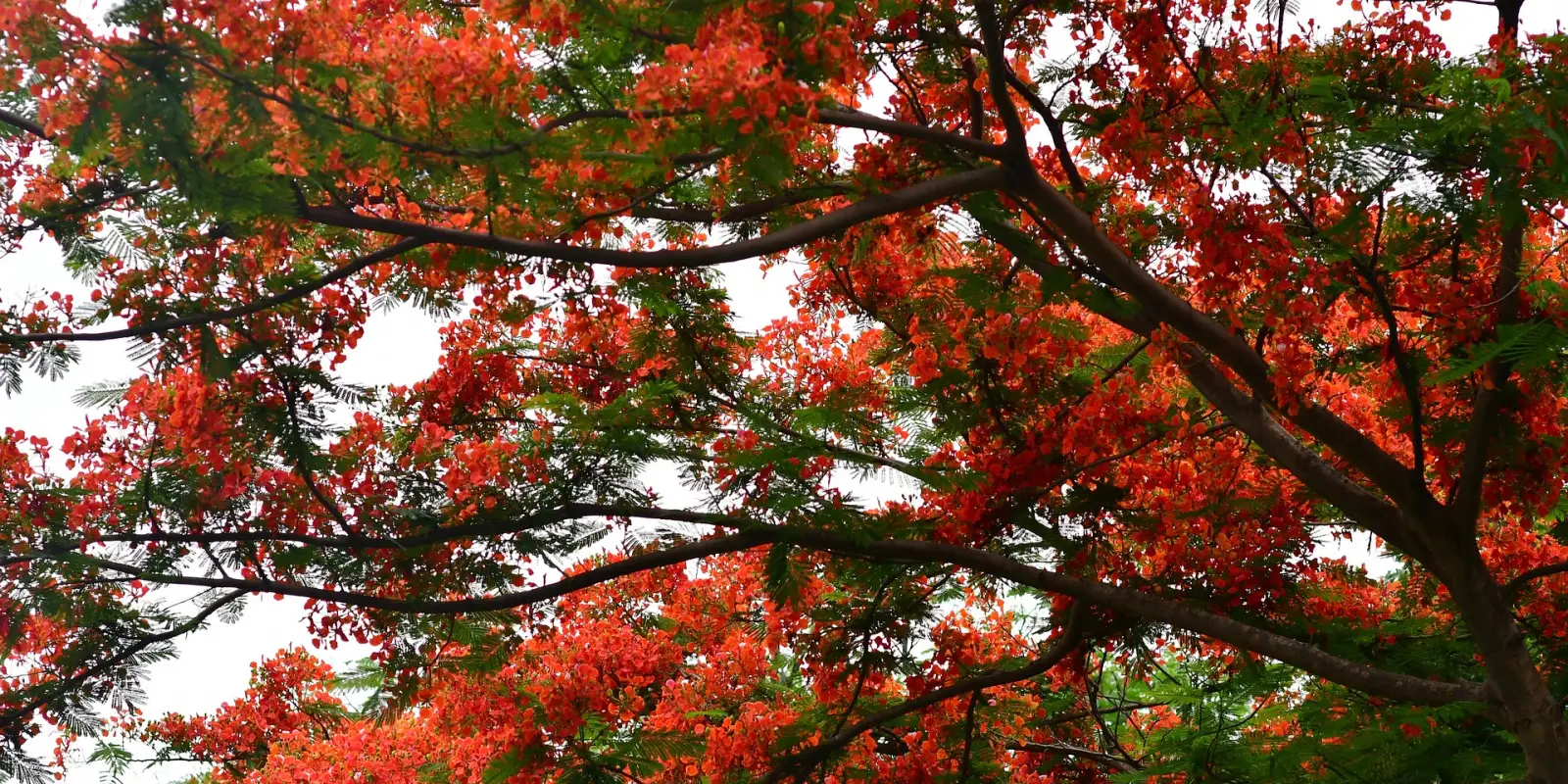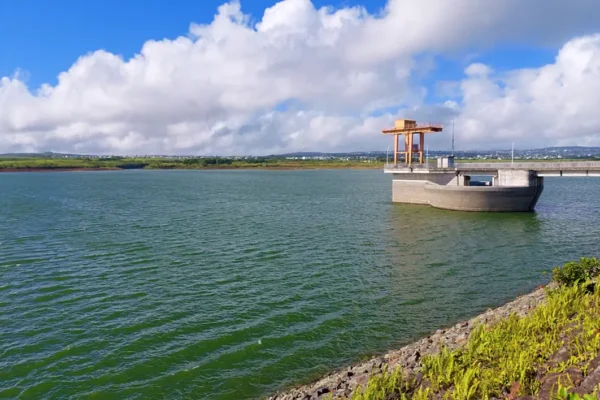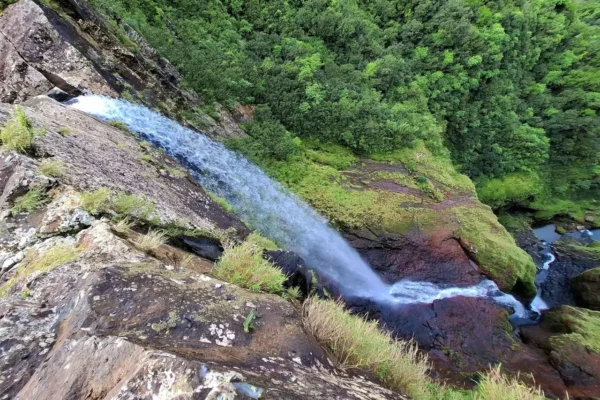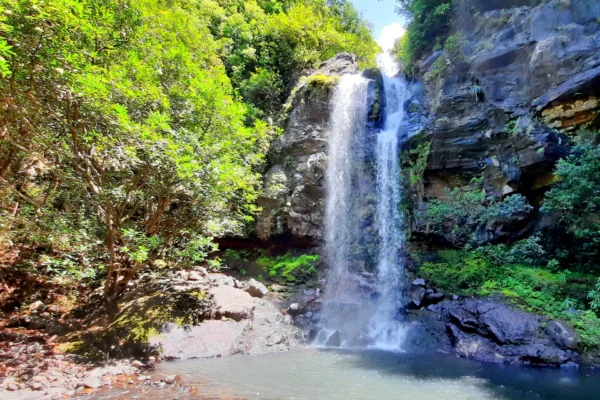At each end of the year, they bring happiness to our mood when they blossom. We find them in many parts of the island, and they are also a sign of upcoming events. They are the “Flamboyant” trees. Let’s discover them!
The locals are fond of the Flamboyant trees. It is well-known as “Pie Bonis” (Bonus Tree) because it blossoms in the period when the end-of-year bonus is paid by employers. In addition, we call it “Bouke Banane” (Yearly Bouquet) as well. The flowering of the Flamboyant trees happens in November and ends at the beginning of January. That is why Mauritians name it the yearly bouquet.
Scientific Name: Delonix Regia
So, what is the origin of the Flamboyants? The scientific name of this beautiful and famous species is Delonix Regia, imported from Madagascar at the end of the 1830s to the Mascarene Islands, including Mauritius. The Flamboyants were planted firstly around Port-Louis, in Pamplemousses Garden, and at Lataniers. Then later, scattered around the island.
The Delonix Regia is endemic to Madagascar. The flowers usually contain 4 to 5 petals up to 7cm long. In Mauritius, the fern-like leaves are in 3 varieties of colors: red, orange, and yellow. The red is the most seen and widely present, while the others are rare. The colors vary depending on the species. The Flamboyants prefer a tropical climate to grow precisely in an open environment and light soils. Moreover, the tree can grow up to 15m in height.
Where To Find Flamboyant Trees In Mauritius?
The Flamboyants are everywhere, in many regions and people’s yards. There is no preferred selective place for it. However, the most popular sites for photos are in the North and the West regions. A list of the top 10 places for the best Flamboyants in Mauritius is Cap Malheureux, Mont-Choisy, Médine, Labourdonnais, Le Goulet, Belle Mare, Bel Ombre, Terre Rouge, Daruty and Marie Reine de la Paix.
In the surrounding of Notre-Dame Auxiliatrice chapel at Cap Malheureux, you will find beautiful Flamboyants. It is also a popular site for photoshoots. The village of Cap Malheureux itself is rich with Flamboyant trees on the borders of the roads and in private yards. Another place to find plenty of Flamboyants is between Mont-Choisy to Pointe aux Cannoniers.
Furthermore, the track to the old Médine sugar mill is full of Flamboyants. It is the most recommended place in the West for it. There are two sites to take into consideration. The first is the road that leads to the Kovil and the other is near the old sugar mill’s main entrance. The Domaine de Labourdonnais in the North, has few splendid Flamboyant trees, particularly near the old sugar mill’s chimney. It is located in front of the La Corbeille shop. Every year, the Flamboyants bring a breathtaking view of the area. You will find Flamboyant trees at Le Goulet, a lesser-known and small village, on the road from Le Goulet beach to Balaclava.
In the same line of thought, there are Flamboyants in the surroundings of Belle Mare’s old sugar mill ruin, making this place gorgeous. In the South, you can enjoy some nice Flamboyants near Le Château de Bel Ombre. At Terre Rouge, near the roundabout and on the way where the police station, there are beautiful Flamboyant trees. In the North again, the road to Daruty forest and its surroundings reserve some nice-looking Flamboyant trees. Finally, at Marie Reine de la Paix, Port-Louis, the Flamboyants transform the site into an attractive landscape.
A Tree Which Changes The Mood
It is no doubt true that Flamboyant trees bring immense changes in our life. They are beautiful, spread a positive vibe to localities, and change our mood when they blossom. Mauritians are happy to see such a tree as it is a sign of festive events as well. The end-of-year bonus, Christmas, and new year are all points in our minds while admiring a Flamboyant tree. Hopefully, we will continue to preserve this species as it forms part of our heritage.
Author & References

Author: Ali J | Date Published: December 2, 2021 | Last Updated: November 28, 2022
References: biodiversitylibrary.org (Plate 2884), Curtis’s Botanical Magazine 1829, Wikipedia.
Special Thanks: Keshav Ramdhan.
Subscribe For Newsletters
Not just newsletters, but you may enjoy free vouchers, coupons, activity deals and many others while subscribing…






